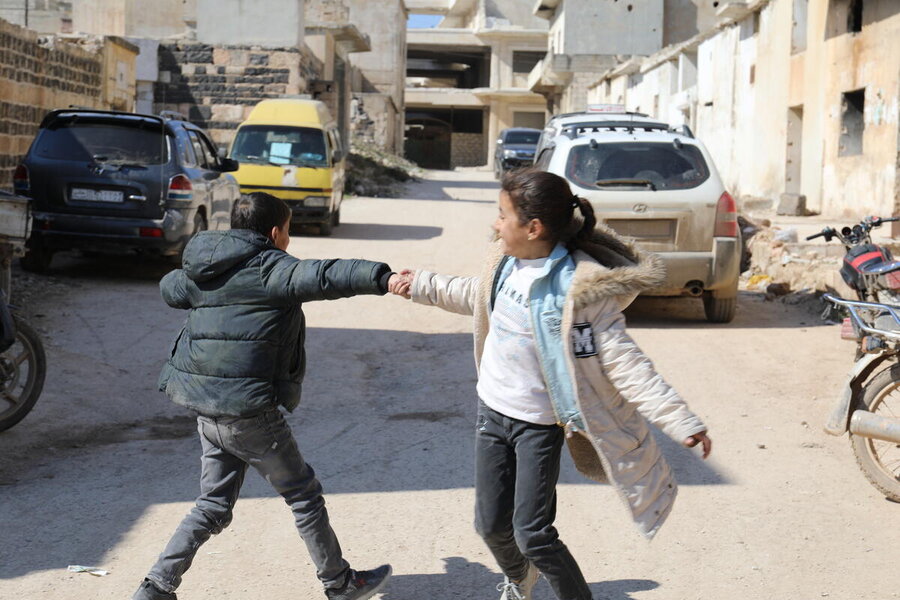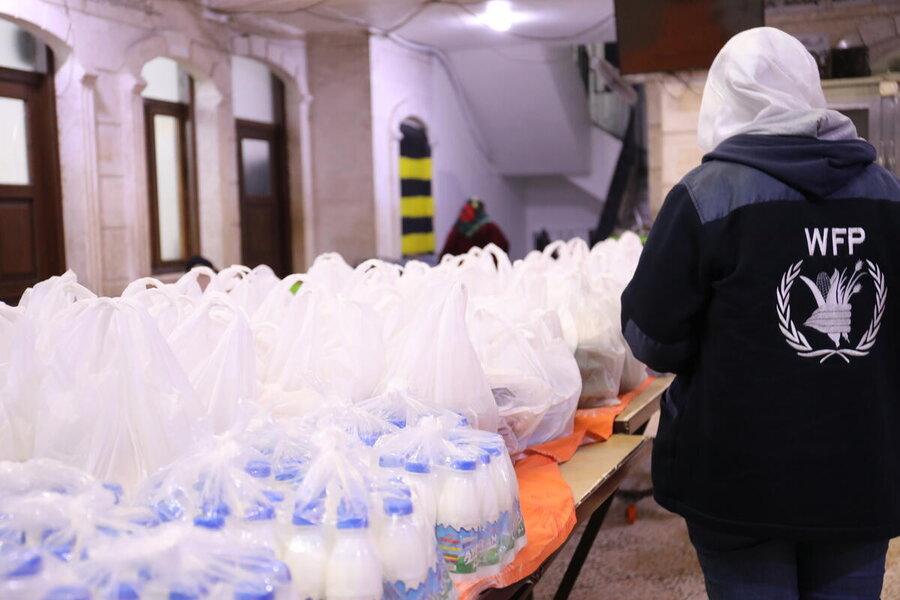Nourishing Syria’s future: How WFP is rethinking nutrition for a generation born into conflict

Since the outbreak of the Syrian conflict in 2011, the country has endured immense suffering, with more than 75 percent of the country’s 10.5 million children born into a war-torn nation, according to UNICEF (the United Nations Children’s Fund).
Many of these children, now entering their teenage years, have known only violence, displacement and deprivation. The health impact has been severe, with rising malnutrition, stunted growth and inadequate access to essential nutrients threatening their long-term development.
Historically, “Syria never had an issue with malnutrition in children,” says Yasmine Lababidi, World Food Programme (WFP) team lead for nutrition and school feeding in Damascus. Even amid conflict, children remained relatively protected, thanks to the sacrifices of adults, such as skipping meals.
But after more than a decade of war, economic collapse, a global pandemic, the devastating earthquake of 2023 and fallout from the conflict in Lebanon in the final months of 2024, the situation has drastically changed.

Across the country, 9.1 million people are food insecure, while the Syrian economy has collapsed. Due to funding shortfalls, WFP was forced to cut assistance by nearly 80 percent in 2024, and now supports only 1.5 million people each month.
In 2019, a UNICEF-led survey put child malnutrition at 1.7 percent. Today, that rate has nearly tripled to 4.8 percent. By 2023, almost one-third of Syria’s 14 governorates reported child malnutrition rates exceeding the World Health Organization’s 5 percent emergency threshold.
In coastal areas, the rate surged to 14 percent – three times the global emergency threshold – highlighting the severity of a crisis that has deepened since the overthrow of the Government last December.

The effects of this rising malnutrition extend beyond childhood. Chronic undernutrition in mothers has lasting impacts on their children even before birth. Malnourished mothers pass deficiencies onto their unborn children, leading to health issues from the moment of birth.
In Syria, malnutrition rates among pregnant and breastfeeding women have risen sharply, averaging 7 percent, but reaching as high as 19 percent in some areas – posing severe risks for maternal and child health.
Smarter targeting
In 2023, faced with rising malnutrition and decreasing funds, WFP had to reassess its approach to food assistance in Syria. The previous blanket assistance model was no longer viable. It became clear that a targeted, nutrition-focused strategy was needed. This led to the creation of the Anmu (“I Grow”) targeting and assistance initiative.
Anmu takes a nutrition-first approach, focusing on families most at risk of severe malnutrition. Its main goal is to protect the first 1,000 days – from pregnancy to the child’s second birthday – a critical period when malnutrition can have the most damaging effects on physical and cognitive development.

The programme targets families with children aged under 2, and pregnant or breastfeeding women who have received treatment for moderate malnutrition. Families receive food or cash to meet their nutritional needs.
“At this stage, prevention is our key objective,” Lababidi explains. “We focus on households with children and pregnant or breastfeeding women showing signs of nutritional vulnerability, such as stunted growth or malnutrition.” Identified households also receive nutritious top-ups to prevent malnutrition before it becomes entrenched.

Anmu operates alongside another targeting strategy, Mueel (the “breadwinner”), based on community-based targeting. Both programmes, running since 2024, help navigate the social complexities of WFP’s forced scale-down, using scientific methods to guide resource distribution and assure communities of transparency and fairness.
Comprehensive care
Coordination with other UN agencies, including UNICEF and the UN Population Fund (UNFPA), is central to the initiative’s success. The agencies align food assistance with health and nutrition programmes to address immediate and long-term needs. Children with moderate malnutrition receive nutritional supplements at WFP clinics, while severe cases are referred to UNICEF for treatment. Pregnant and breastfeeding women are linked to UNFPA for comprehensive prenatal and postnatal care.
“We co-locate with UNICEF and UNFPA in the same areas,” Lababidi says. “If a child has moderate malnutrition, WFP treats them. If it’s severe, UNICEF takes over. This ensures no child falls through the cracks.”
The approach guarantees that aid reaches those in need without gaps in care. WFP’s targeted interventions, informed by precise data, help make every penny of limited funding count.

Anmu is part of a broader global strategy to integrate nutrition-sensitive programming into WFP’s wider assistance framework. This innovative approach shifts the focus from merely feeding to preventing the long-term effects of malnutrition. It is a transformative moment in identifying and addressing food insecurity, emphasising improving nutritional outcomes.
Syria’s crisis is far from over, but initiatives like Anmu and Mueel provide hope for the most vulnerable people. By carefully targeting resources and using data-driven strategies, WFP ensures that limited resources have maximum impact. While the road ahead remains uncertain, Syria’s future generation still has a chance to grow, thrive and build a healthier tomorrow.


